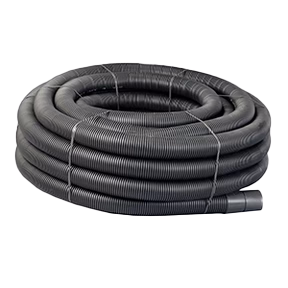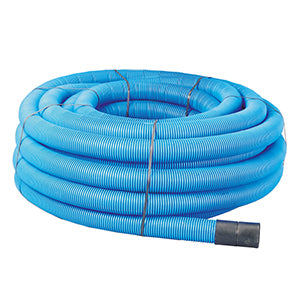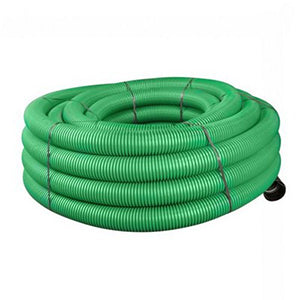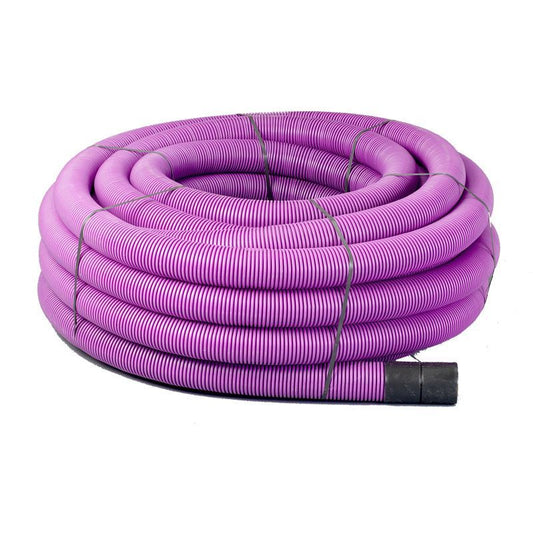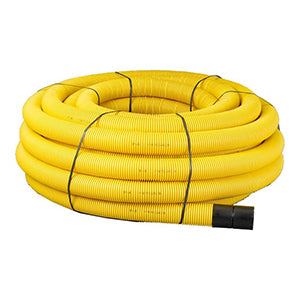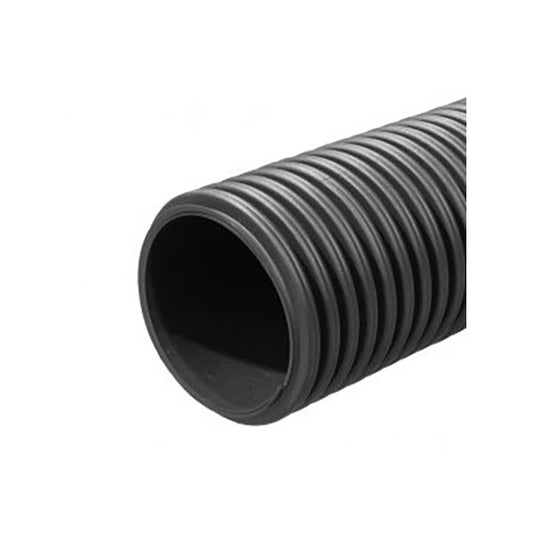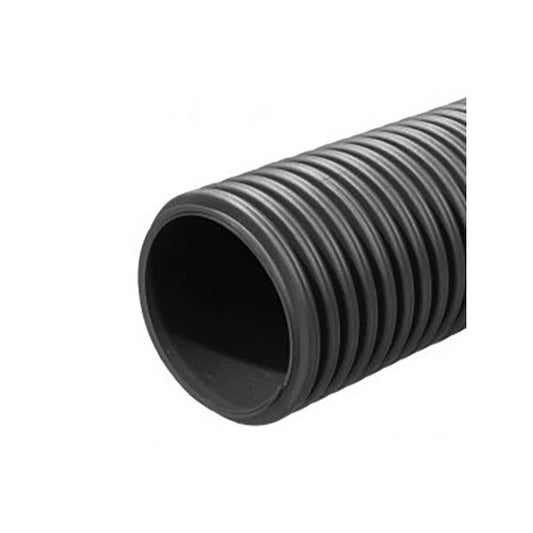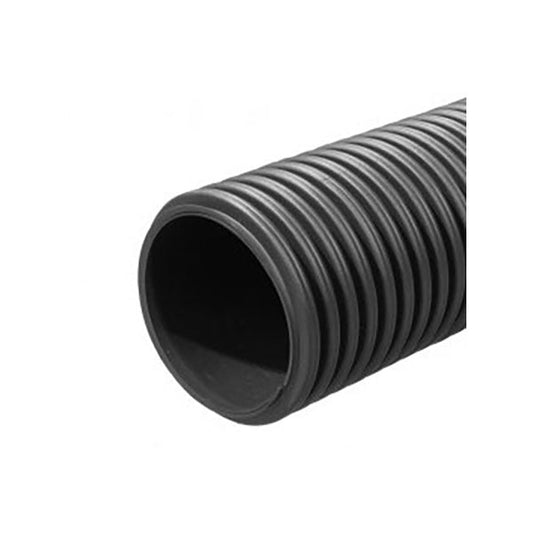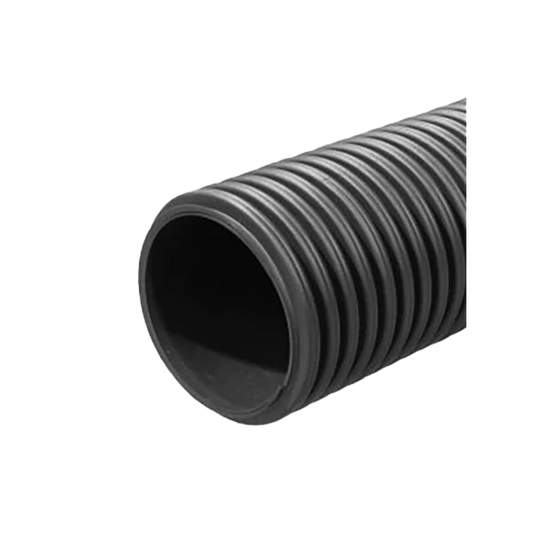In this blog, we will discuss the key properties of both twinwall ducting coil and twinwall pipe alongside their fundamental differences. At Cotterill Civils, we are committed to finding the perfect drainage solution for your unique project requirements.
Contents
What is Twinwall Duct Coil?
Twinwall duct coil is installed underground and its main purpose is to protect cables which run through them from damage. As well as this, it alerts others as to the contents of the cables within the ducting which keeps workers safe, and also allows for a standardisation within this type of groundworks application. Examples of the contents which would run through twinwall duct coil include water, electricity, telecommunications and gas.
Twinwall duct coil is flexible, which makes it ideal for applications where the duct needs to go in different directions. Made from high-density-polyethylene (HDPE), the twinwall duct coil has an outer corrugated layer which adds strength to the product and helps to further protect the cables within it. The inside layer is smooth which allows cables to flow through easily and not snag.
Here are the different colours of twinwall duct coil and their associated applications:
Electricity – Black
CCTV – Green
Water – Blue
Gas – Yellow
Motorway Communication – Purple
Street Lighting – Orange
Street Lighting (Scotland) – Purple
Traffic Signals – Orange
Telecommunications (BT) – Grey
What is Twinwall Pipe?
Twinwall pipe, also known as carrier pipe, is used only to transport water in underground drainage systems. Similarly to twinwall duct coil, twinwall pipe is made from HDPE and has a corrugated outer level to increase strength and durability. It can be used within drainage systems, stormwater management and sewer infrastructure.
Twinwall pipe is available as both perforated or unperforated to suit different project requirements. Perforated twinwall pipe, also referred to as filter drain, has a selection of holes cut inside the corrugations of the pipe. These holes are used to collect and carry water from a waterlogged area to a designated place, such as a storm drain or a natural watercourse like a stream. In contrast, unperforated pipe is completely solid and does not have any holes in its outer layer. It carries, but does not collect water to a dedicated discharge point.
What is the difference between Twinwall duct coil and Twinwall pipe?
- Twinwall duct coil is used to protect cables with varying substances inside as opposed to twinwall pipe which is designed to carry water.
- Twinwall duct coil has multiple colours to represent different contents whereas twinwall pipe is black.
- Twinwall duct coil is flexible to account for omnidirectional use, whereas twinwall pipe is rigid and goes in straight lines.
What does Twinwall duct coil and Twinwall pipe have in common?
- They are both twinwall products which means that they are strong and provide extra protection against damage. The outer corrugated layer adds structural durability, and the inner layer is smooth to allow for a high flow rate.
- They are both made from HDPE which is lightweight and stronger than its PVC counterpart.
- Both products are BBA approved.
At Cotterill Civils, we have experts on hand with over thirty years experience within the civils and drainage industry who can offer guidance and advice regarding the best products for your project requirements. We stock twinwall duct coil and twinwall pipe in various sizes and lengths which are suitable for a range of applications. In addition, many of the sizes of pipe/duct are stocked in our yard ready for immediate dispatch.
Call 0121 351 3230 today to speak to one of our industry experts.
Alternatively, fill out our enquiry form:






